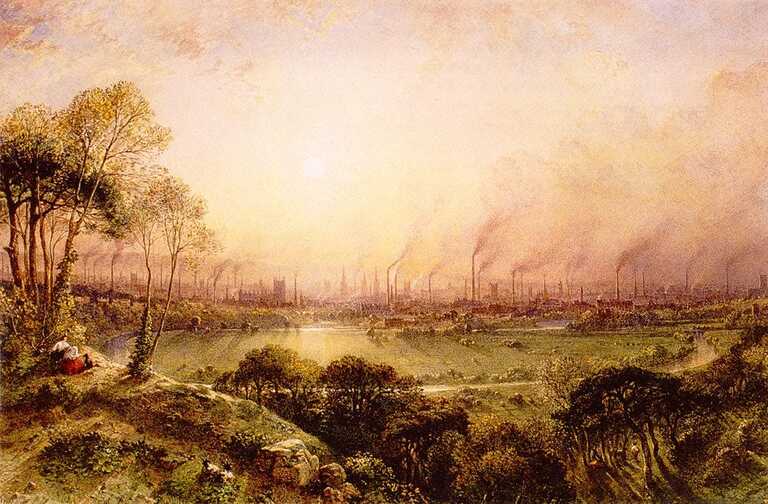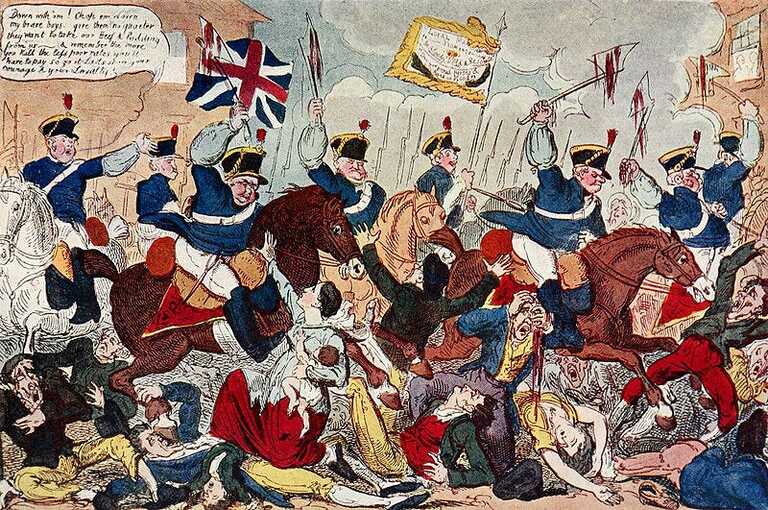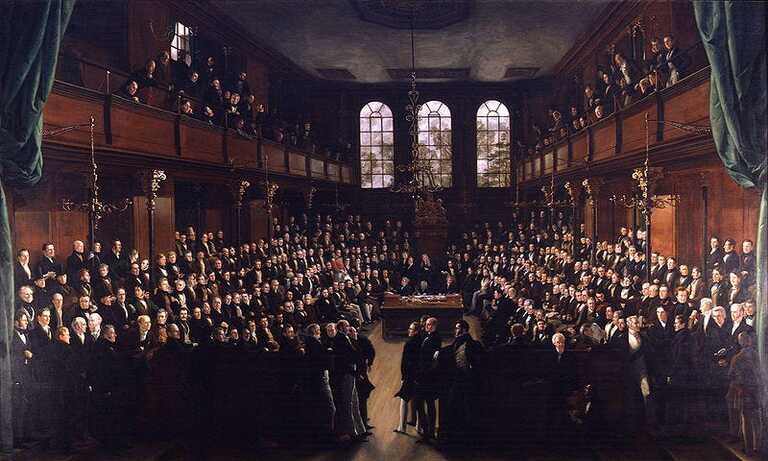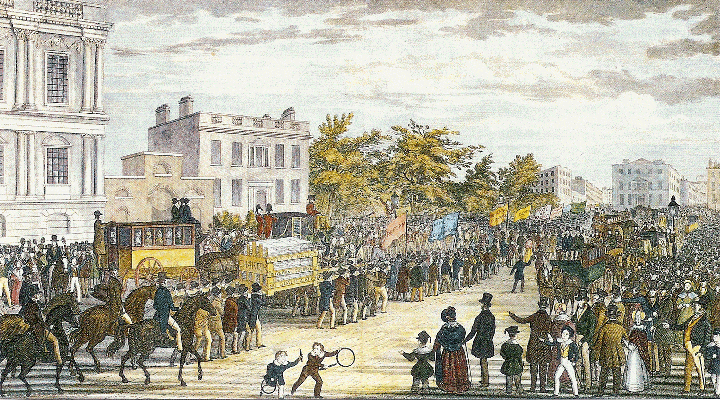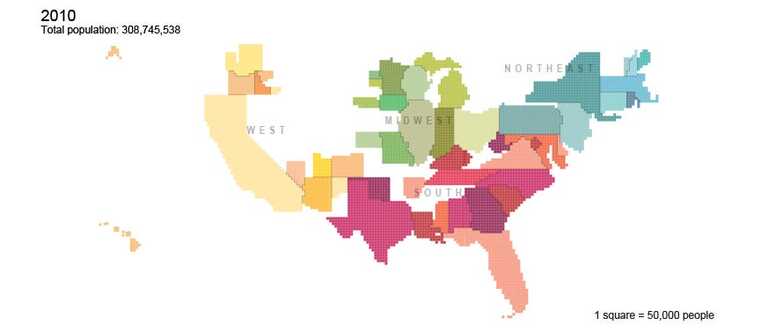UPDATE 2024/01/04: This post originally appeared on my Civility and Truth Substack newsletter. I’ve moved it to my main site in an effort to collect all of my writing in one place.
This week I’m again taking off from doing data analysis, but my topic is not actually that removed from my previous posts on population density in Howard County: I take a look at the long history of political conflict between urbanized areas and rural areas, with a focus on how that played out in the United Kingdom in the 19th century.
From their beginnings in Mesopotamia six thousand years ago cities have attracted those in search of opportunity and attractions. But cities have also been seen as alien intrusions upon a landscape of farms, forests, and grasslands perceived to be the true heart of a nation.
In a predominantly agricultural economy those who possessed land thereby possessed political power. As cities grew larger and wealthier their inhabitants, and especially their elites—merchants and traders—sought a share of such power, but faced an uphill battle in a political system that was rigged in favor of a land-owning aristocracy.
One such battle occurred in the UK in the late 18th and early 19th centuries, as it was making the transition from an agricultural to an industrial economy. At that time members of Parliament were elected by a voting population that was not only small but unevenly distributed between rural and urban “boroughs” (electoral districts).
The most infamous example of this was the borough of Old Sarum (shown above), site of a hilltop fortress and associated settlement that had been abandoned in the 14th century but was still allotted two members of Parliament through the 18th and early 19th century. In 1831 those two members were elected by a total of only eleven voters, all absentee landowners.
Old Sarum was the most extreme of what were termed “pocket boroughs” or “rotten boroughs”, but it was far from the only one. According to Wikipedia, “By the time of the 1831 general election, out of 406 elected members, 152 were chosen by fewer than 100 voters each, and 88 by fewer than fifty voters.” The overall electorate at that time was about 400,000 people (where “people” here really means “men with substantial holdings of property”), and the population of the UK around 25 million or so.
Thus in the early 19th century a majority of the Parliament (240 members out of 406) were elected by less than 20,000 voters, less than 5% of the electorate and less than 0.1% of the total UK population.
The painting above shows a different kind of landscape, dominated by the factory chimneys of the city of Manchester. At the center of Britain’s industrial revolution, Manchester grew from a small market town of 10,000 people in the early 18th century to a city thirty times that large by the mid-19th century. It ended the 19th century encompassing a metropolitan area of over 2 million people.
This rapid growth left Manchester both disenfranchised as a city (it shared one member of Parliament with the surrounding county) and populated by a new working class that grew restive at its treatment and hungered for representation. However this movement was strongly resisted by the political powers that be: the French revolution and the subsequent Napoleonic wars had rendered the landowning British aristocracy paranoid about the possibility of revolution closer to home.
The local militias raised against an invasion of England that never came were thus repurposed into a force to guard against the possibility of internal rebellion. The villain George Wickham in Jane Austen’s Pride and Prejudice was a member of such a militia, and at the end of the novel was deployed to the industrial town of Newcastle upon Tyne in the north of England.
Opposition to reform was of course not couched as a way to retain power and privilege, but rather as advocacy of government by an enlightened and educated property-owning aristocracy, instead of “mob rule.” Jane Austen implicitly made this argument in novels like Pride and Prejudice, which features a young landed aristocrat (Mr. Darcy) growing into his responsibilities as a member of the ruling class, and Mansfield Park, which contrasts the sedate and staid morality of the eponymous country estate with the laxity of London—where “everything is to be got with money,” in the words of antagonist Mary Crawford.
However Austen was no fool. Through the words of her heroine Fanny Price she implied that the tranquility of Mansfield Park was established on the backs of slaves, and she also knew that many local gentry fell far short of the ideal of Mr. Darcy—see for example her portrait of the idle and vain baronet Sir Walter Eliot in Persuasion. She was a member of a nascent middle class, many of whom would make common cause with their working class brethren in support of political reform.
In August of 1819, almost exactly two hundred years ago (and two years after the death of Jane Austen), the growing movement for Parliamentary reform met violent resistance, in what became known as the Peterloo Massacre: A crowd of tens of thousands of people in Manchester (a substantial fraction of the local population) was gathered to hear a speech by the radical reformer Henry Hunt, when they were set upon by a local militia ordered by city magistrates to disperse the crowd. Eighteen people were killed in the ensuing chaos (depicted in the cartoon above), and several hundred wounded.
(Incidentally, the British director Mike Leigh—himself from Manchester—did a film about this event, titled simply Peterloo; it’s available on Amazon Prime Video. It’s less of a conventional film and more of a dramatized documentary, and its portrait of the aristocracy and the local magistrates shades over into caricature more than once, but it does give a good feel for the rhetoric and passions of the time.)
This act of violent suppression of a peaceful political gathering raised a wide public outcry, but in practical terms its result was a doubling-down of efforts to suppress movements for electoral and other reforms.
The movement for Parliamentary reform won its first victory in the form of the 1832 Reform Act, which eliminated the worst of the rotten boroughs, created new boroughs for cities like Manchester, and expanded the franchise significantly—although it was still restricted to male property owners. (The painting above shows the first Parliament elected after passage of the Act.)
Even this partial victory did not come easily: the bill went down to defeat twice, the second time due to opposition in the House of Lords, and only passed the third time after widespread urban riots and threats by the king to appoint new reform-minded peers.
The movement for Parliamentary reform continued, embodied in the movement known as Chartism. The actual demands of the Chartists seem rather mild and conventional by present-day lights: they included universal male suffrage, secret ballots, constituencies of equal size, and salaries for Members of Parliament. These were presented in the form of various petitions to Parliament over the years, each signed by over a million people. (The engraving above shows a procession conveying the petition of 1842.)
Nonetheless the Chartists, like the Parliamentary reformers before them, were portrayed as radical revolutionaries bent on overturning the established order. The petitions were ignored, and eventually the movement withered away at mid-century.
However in the longer term the reformers’ demands were met: the secret ballot was introduced in 1872, constituencies were reorganized in 1885, and the franchise was steadily expanded, culminating in the extensions of the franchise to women in 1918 (for women 30 and older) and 1928 (for all adult women).
So, enough history. What’s the point? The point is that we still live with this legacy of city vs. country, in both our political institutions and our political rhetoric. The rhetoric harks back to the conflicts between Thomas Jefferson, who envisioned America as a land of independent small farmers, and Federalists like Alexander Hamilton, who sought to make America’s cities powerhouses of commerce and industry. It echoes down to the present-day, when areas like the deep South or the Great Plains are lauded as “the real America” while multicultural metropolises like New York City and Los Angeles are not, even though the latters’ metropolitan areas are home to 1 in 14 and 1 in 25 Americans respectively.
More importantly though, our political institutions favor country over city, most notably in the US Senate, an upper legislative chamber in which predominantly rural states with small populations have equal representation with heavily-urbanized states with populations an order of magnitude larger. The more rural states can thus exercise disproportionate political power in everything from blocking legislation to confirming Supreme Court justices.
The US Census bureau cartogram above helps illustrate this; it retains the shape of states but shows their sizes relative to their population. For example, California by itself appears to equal at least six of its neighboring western states in population, with Alaska thrown in as well, but has only two Senators compared to their twelve or fourteen.
A common response to this observation is “we’re a republic, not a democracy.” This harks back to the Founders’ fear of direct (as opposed to representative) democracy, but in the present-day context is just a fancier way of saying “them’s the rules, go pound sand.” Thus I don’t think this is an answer that should be taken seriously.
So what are the “take aways” here? If the history of Parliamentary reform in the UK is any guide, in the political war between city and country the continued growth of cities ensure that they will win in the end. In the UK it proved unsustainable for a relatively small minority to exercise power over a large majority, and so it will prove in the US. The only questions are: how long will it take? how exactly will it happen? and how severe will be the conflicts that drive the change?
The answer to the first question I think may be, surprisingly long. Depending on exactly when you consider it started and ended, the drive for Parliamentary reform took anywhere from fifty to a hundred and fifty years. (And even today the British political system, like that in the US, uses a system of “first past the post” elections in single-member districts that blunts the political power of popular movements: a party that can command 49.9% of the vote in all districts—but no more—finds itself with no representatives at all.)
In the US it took about eighty years from the creation of the US Constitution to the Reconstruction Amendments that formally gave former (male) slaves the vote, and almost as long again to extend the franchise to women and provide for direct election of US Senators. Given this history, it could easily take half or more of the 21st century to change the institutional imbalances inherent in the present system.
As for how it might happen, the US has a problem in that its political framework is considerably more rigid than that of the UK. The key is the US Senate: it (along with the House of Representatives) must approve proposed amendments to the Constitution, must (again with the House) approve applications for statehood and thus the new Senate seats those would bring, and has the sole power to confirm Supreme Court justices who might be relied upon to uphold the existing order as much as possible. The Senate is likely therefore the last redoubt of an otherwise minority party: if it falls, and falls for good, defeat is almost certain.
Amendments to the Constitution require a two-thirds majority in the Senate as well as the House (or approval of two-thirds of state legislatures to hold a constitutional convention), along with ratification by three-fourths of the states (or their respective ratifying conventions). I therefore doubt any fundamental constitutional change will occur in the foreseeable future relating to the Senate (or the electoral college, for that matter). More plausible is the admission of new states to the union, either jurisdictions like the District of Columbia and Puerto Rico already proposed for statehood, or new states formed by splitting up large and populous states like California.
Assuming the state legislatures were in favor (which is not necessarily a good assumption in splitting states, since many might object to losing territory), this would require only simple majorities in the Senate and House along with a President willing to sign the bill. (I am assuming that by this time the Senate filibuster would have been abolished in an effort to retain Senate control with only a slim majority.) Of course, this works both ways: assuming the opposing party were to subsequently gain control of Senate, House, and Presidency, it could work with cooperative small states to split them into even smaller states and thus regain ground in the Senate.
Finally, how will change happen, especially if control of the Senate remains contested? Those with a bloodthirsty bent may be hankering after a second US civil war, but based on past history in other countries it’s more likely that widespread nonviolent civil disobedience will be the key to future US institutional change. The “magic number” is hypothesized to be about 3.5% of the population or more. In US terms this would correspond to at least 12 million people actively participating in protests and generally mucking up the workings of society, business, and government in a nonviolent way in pursuit of a coherent set of political goals.
The bottom line: I think change will come, but I anticipate that the (US) war between city and country will not end in my lifetime.
That’s all for this week, I hope to write to you again in two weeks. A reminder: if you find these posts interesting and useful please tell other people about them and encourage them to subscribe to the Civility and Truth mailing list. Having readers who care enough to subscribe helps motivate me to send these posts out on a regular basis, and the more readers I have the more motivated I’ll be. In the meantime, thanks for reading this post!

